Abstract
Present methods for assessment of the attack phase of malaria eradication are inadequate, particularly lacking any objective parasitological criteria of success. On the basis of previous observations and development of theory, the authors first postulate that the effects of complete interruption of transmission should, ideally, include a regular progressive decrease of falciparum parasite rates in the ratios of 1: 0.4 in 6 months, 1: 0.16 in 12 months and 1: 0.026 in 24 months. Analysis of a series of programmes in which complete interruption of transmission is known to have been achieved shows that this postulate is valid, and that it is not materially upset by strain differences of parasites or by differences in the ages of the subjects examined. Vivax rates appear to fall at approximately the same rate; the rarity of data for vivax malaria makes firm conclusions unsure, but the postulate can be extended to rates which are predominantly due to falciparum infection but include some admixture of other species. A second, arbitrary, postulate is made that the slowest acceptable rate of fall in 12 months should be in a ratio not less than 1: 0.22, which would secure ultimate eradication in about one-third more time than the ideal fall; on this basis statistical standards are set up for assurance of confidence that the minimum rate is exceeded. Slower rates of fall are then related to reproduction rates causing them, the findings being illustrated graphically and by mathematical theory.
Full text
PDF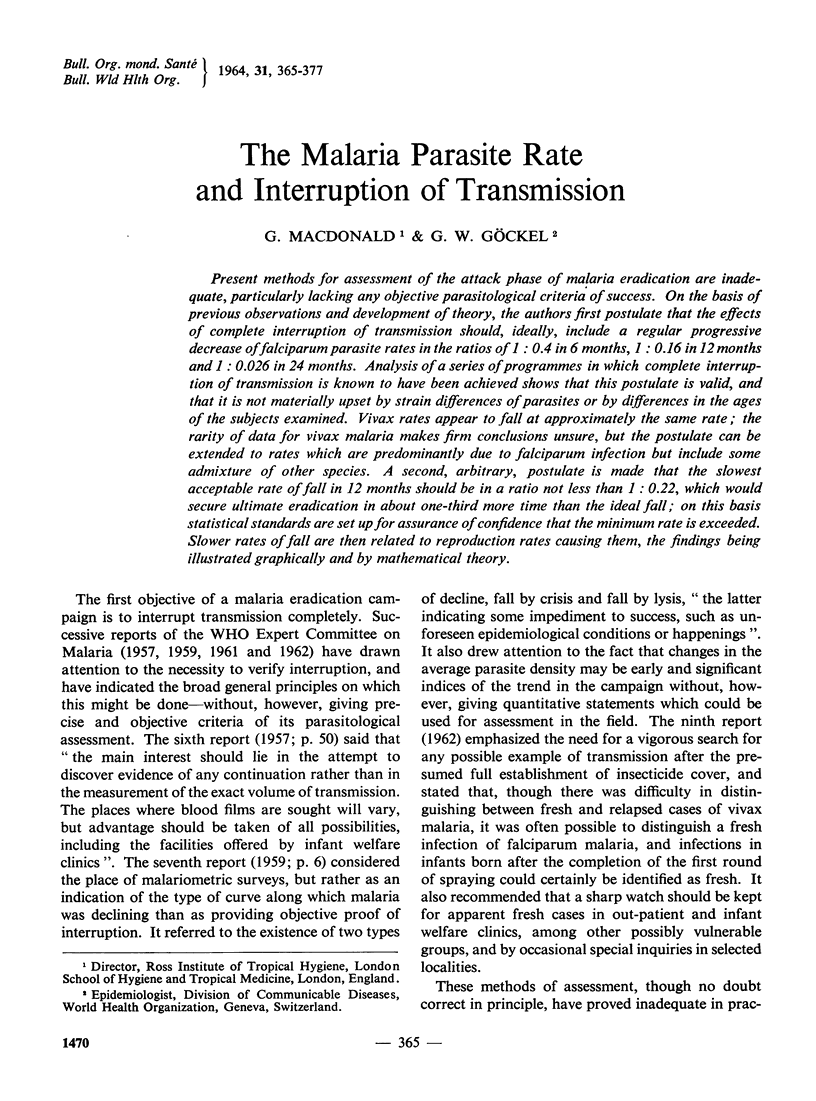
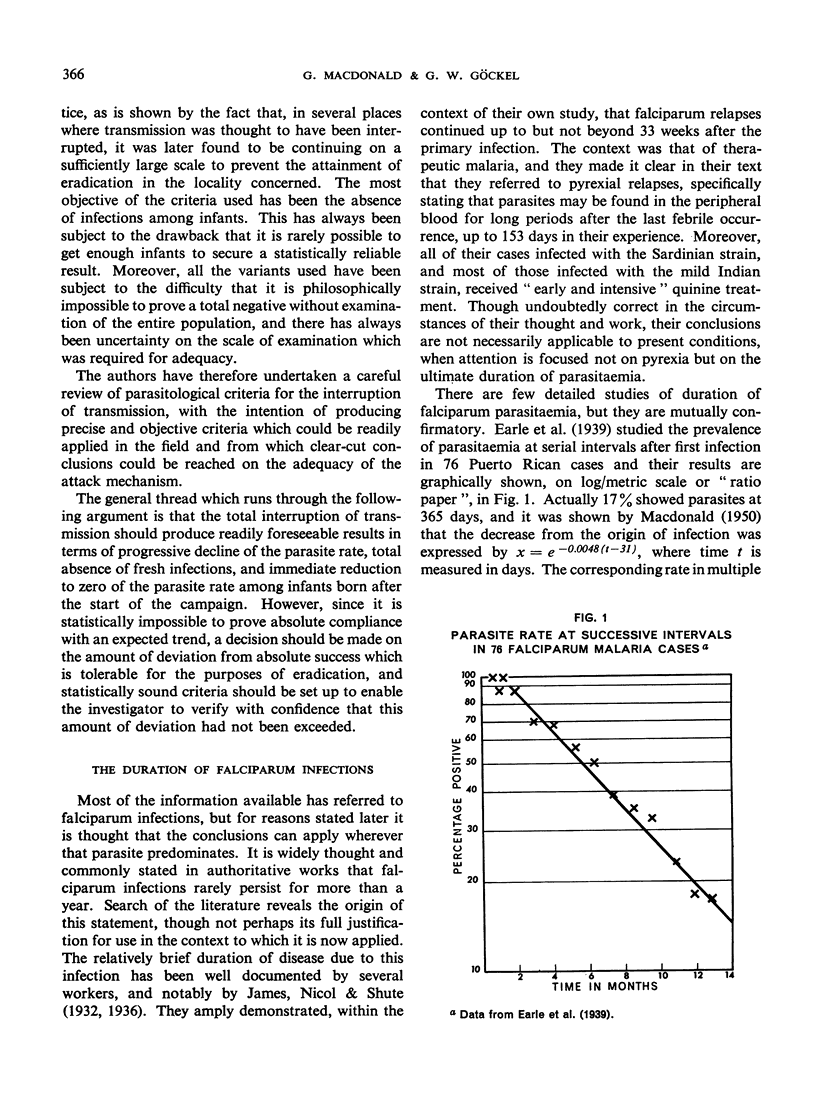
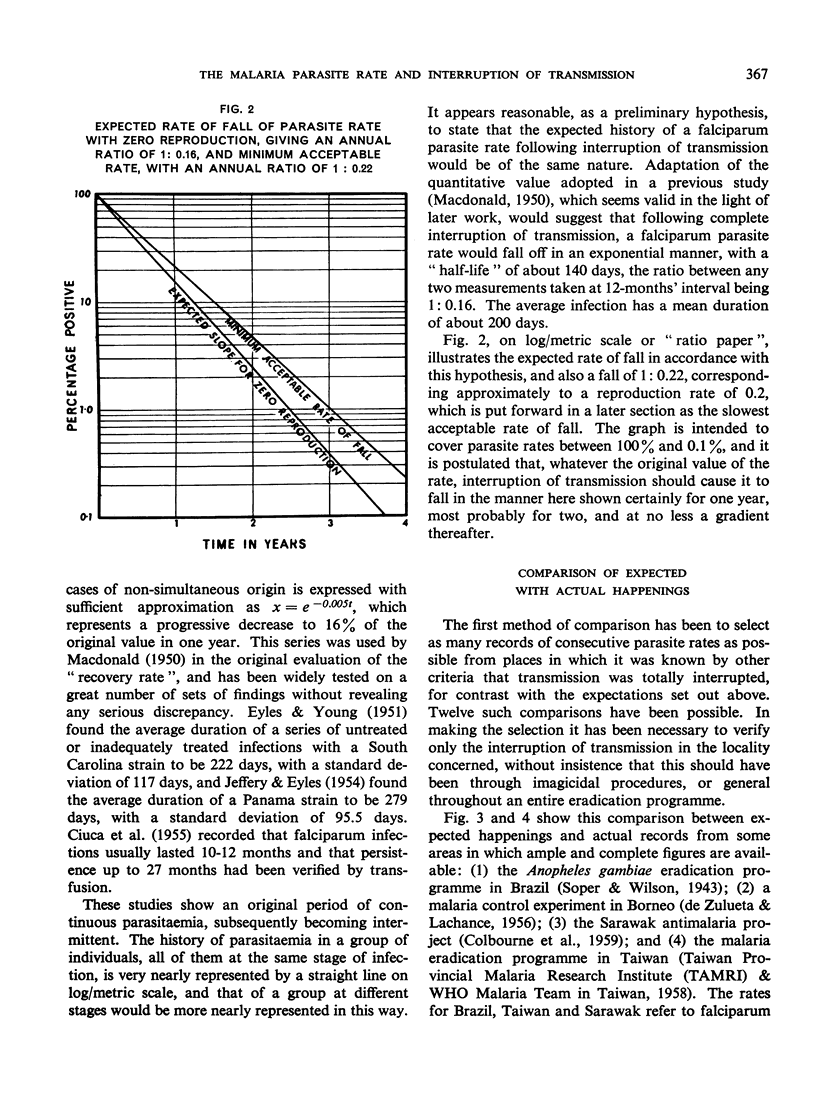
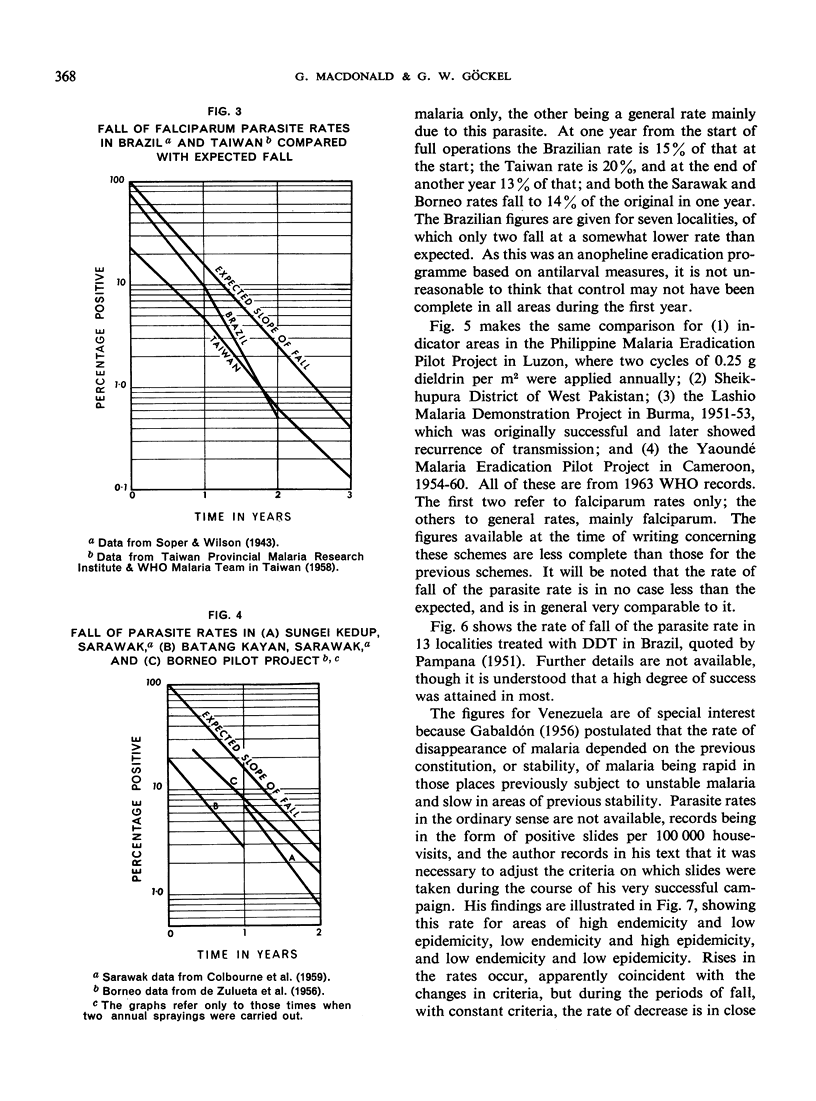
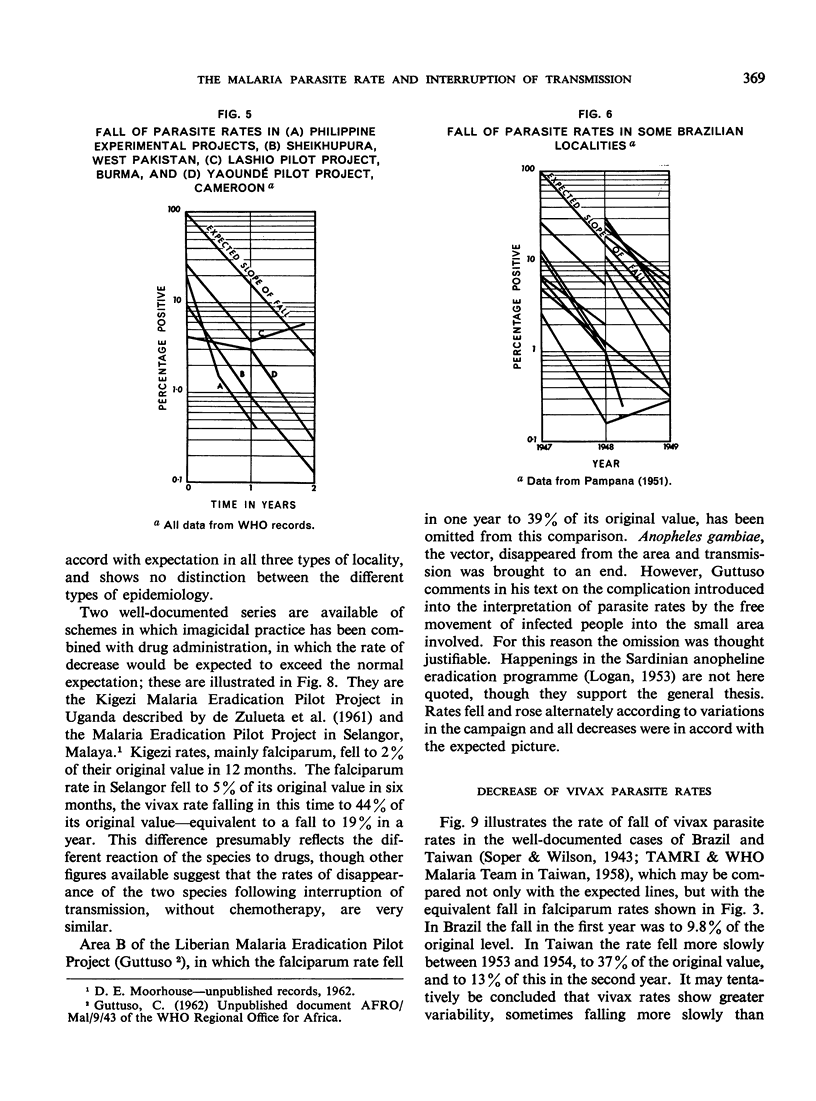
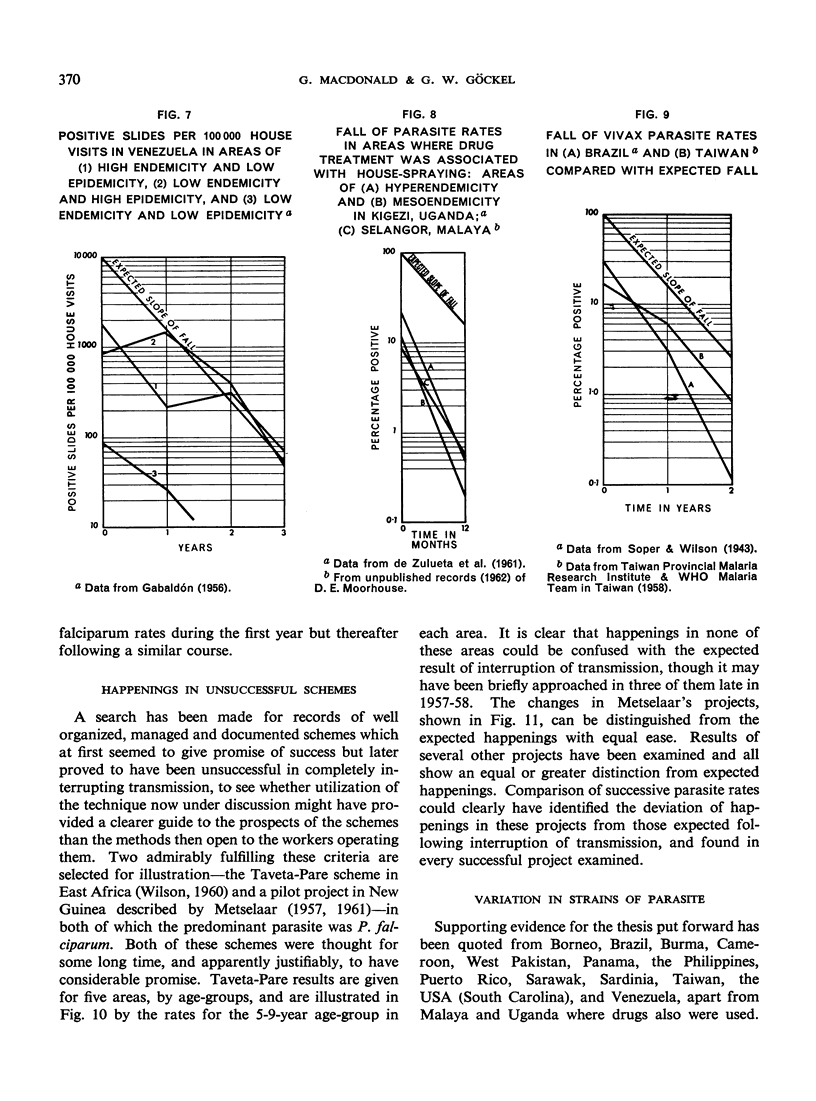
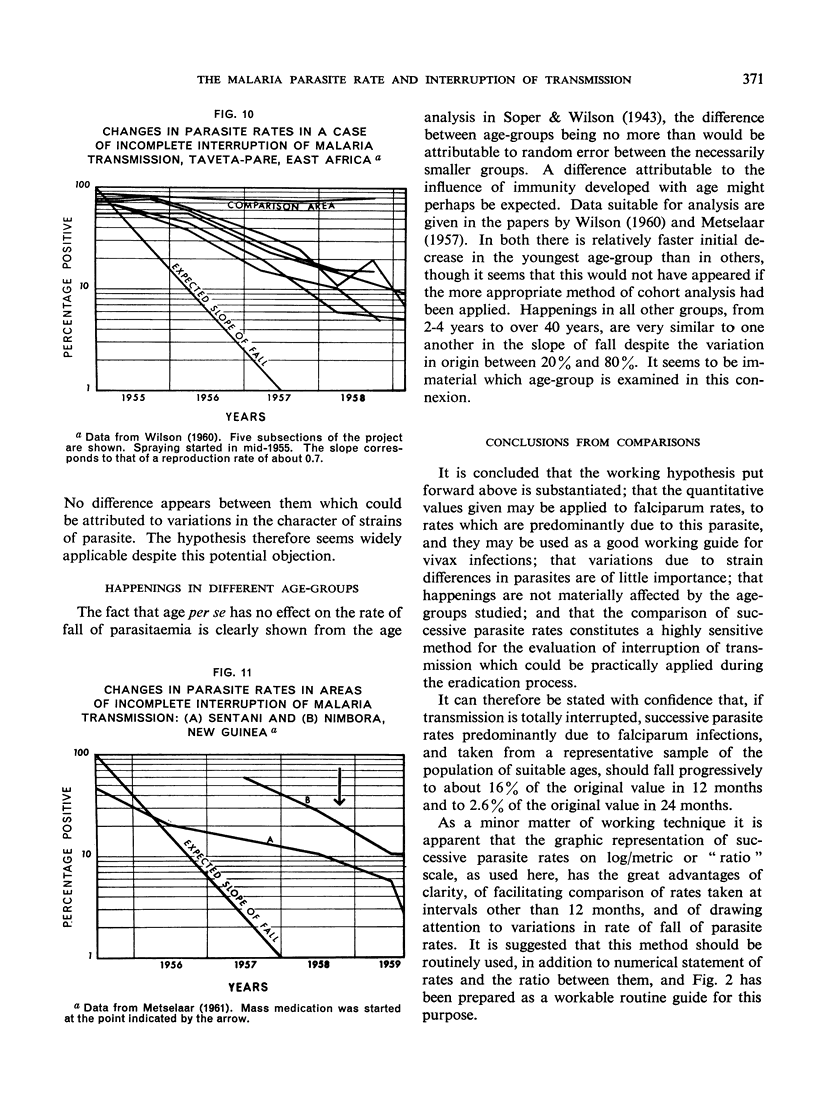
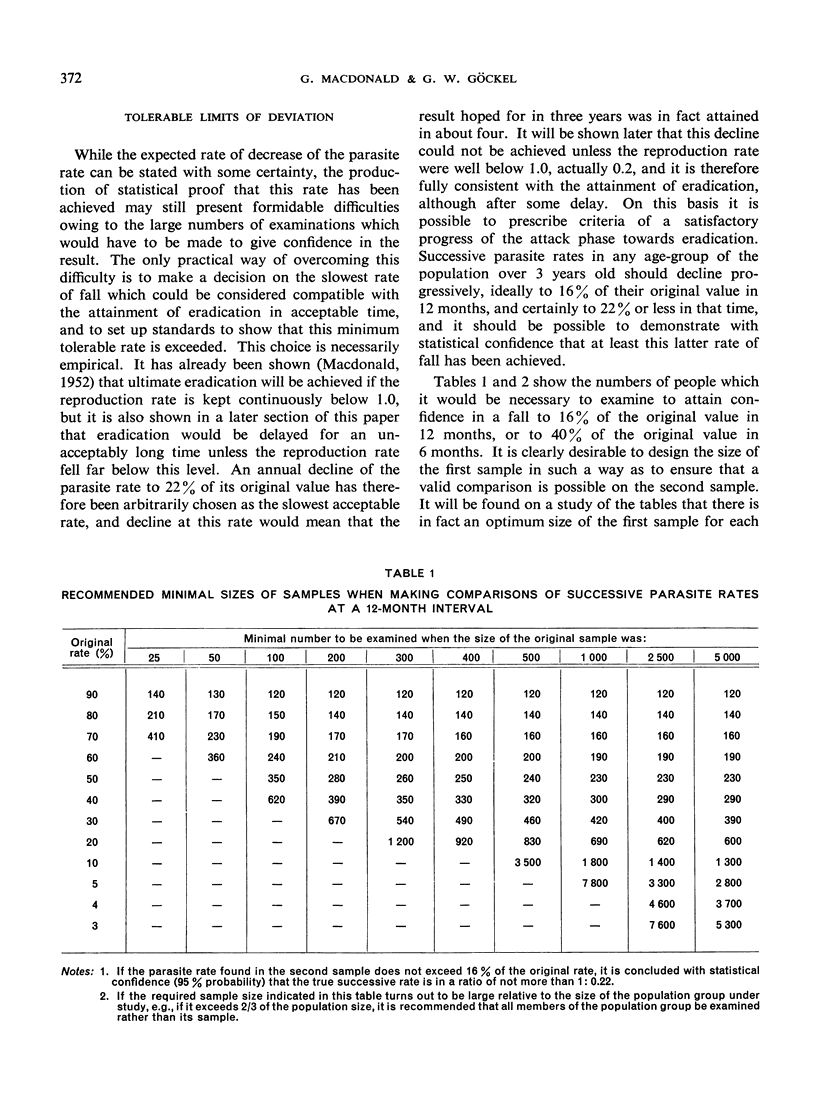
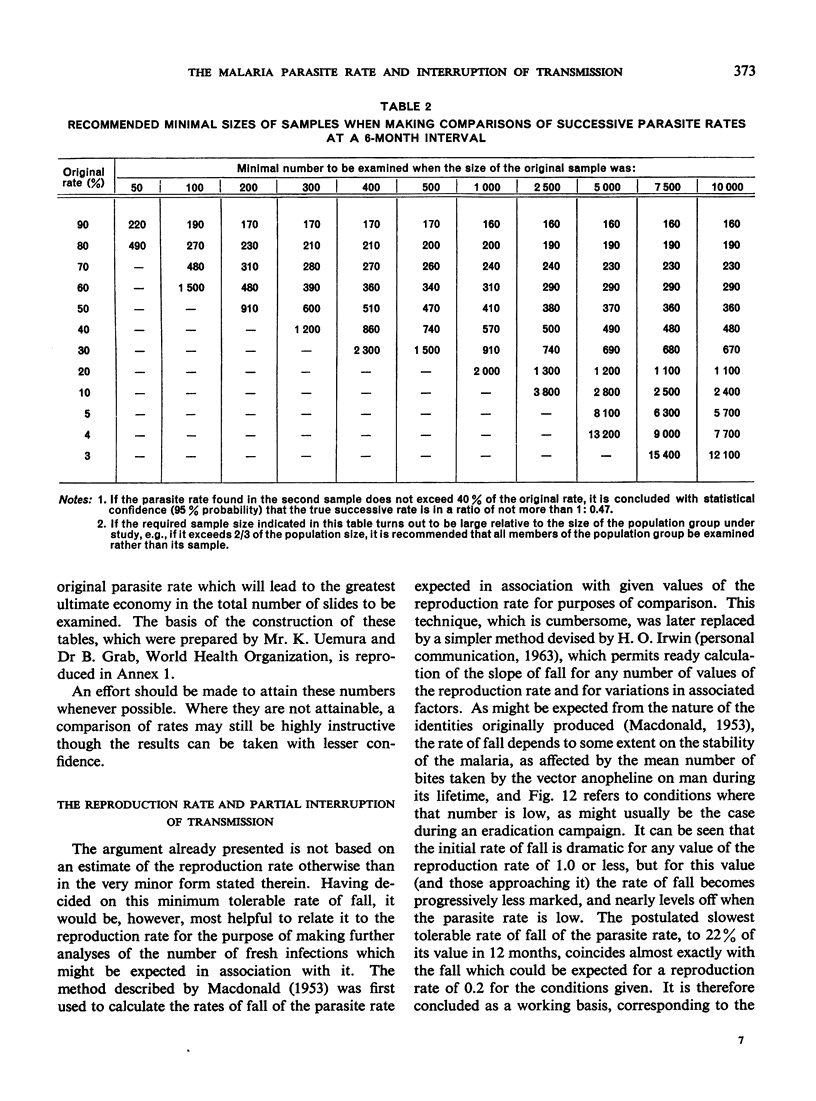
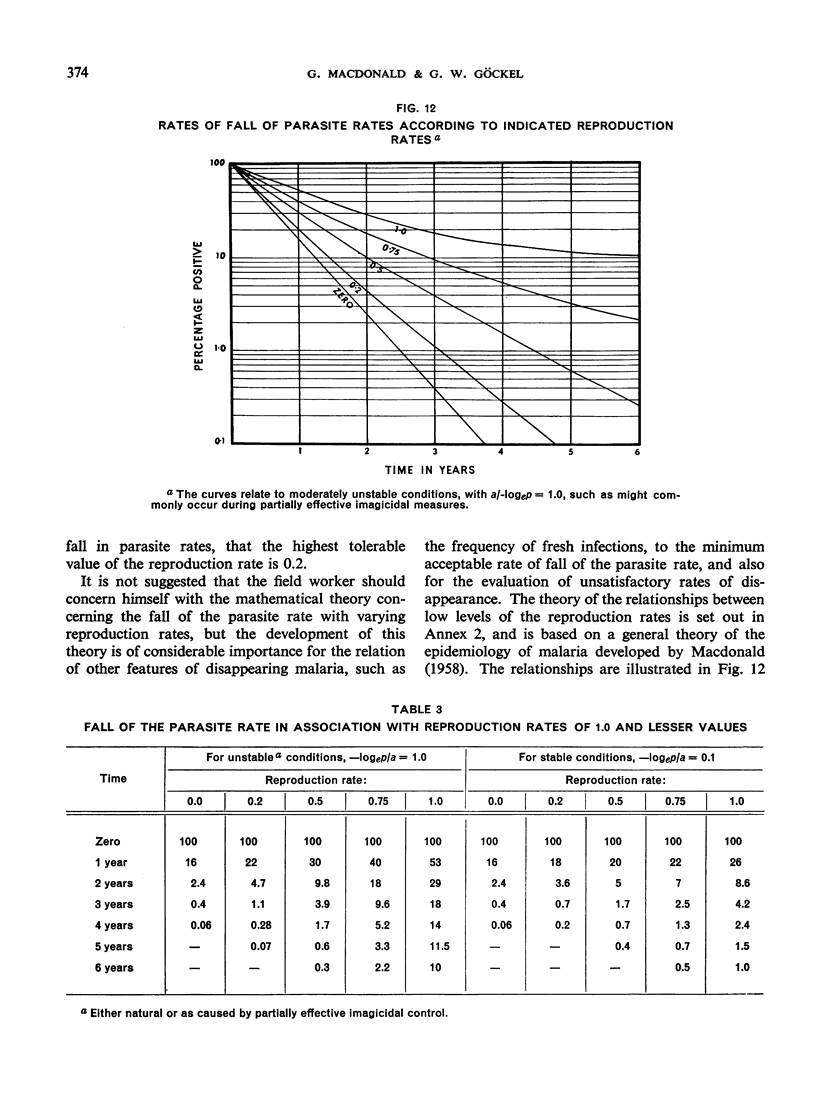
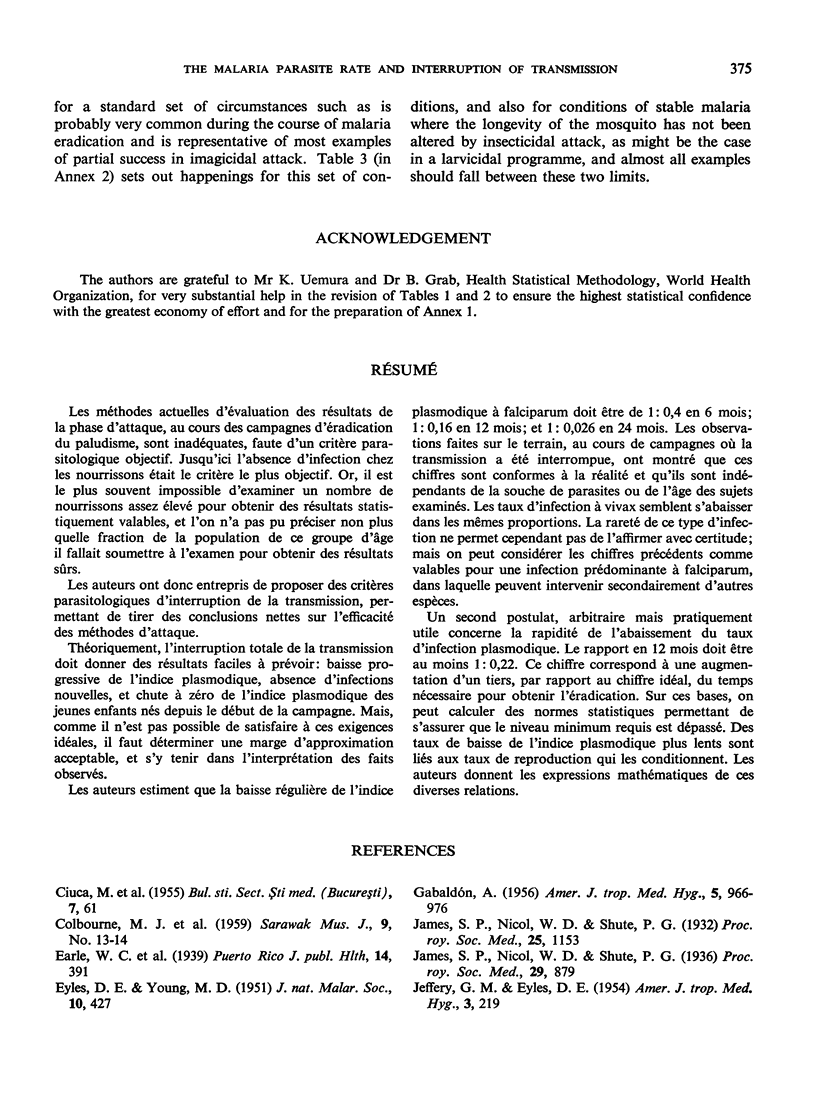
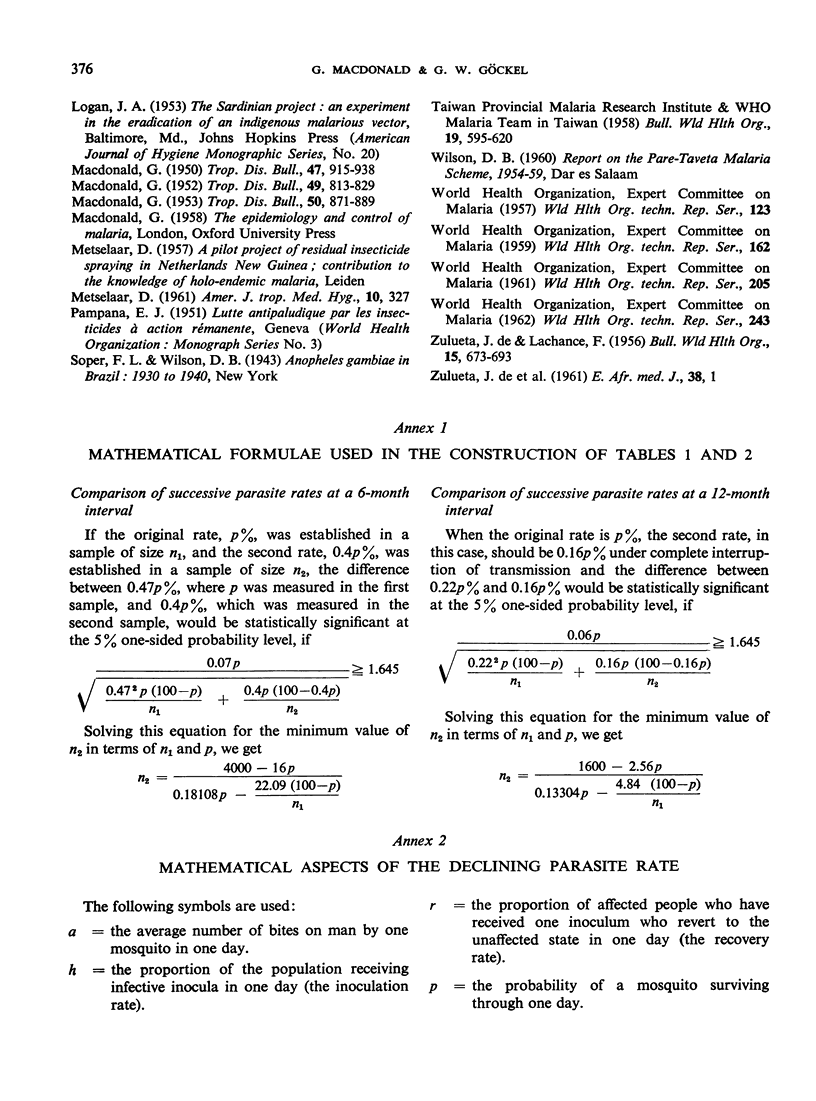
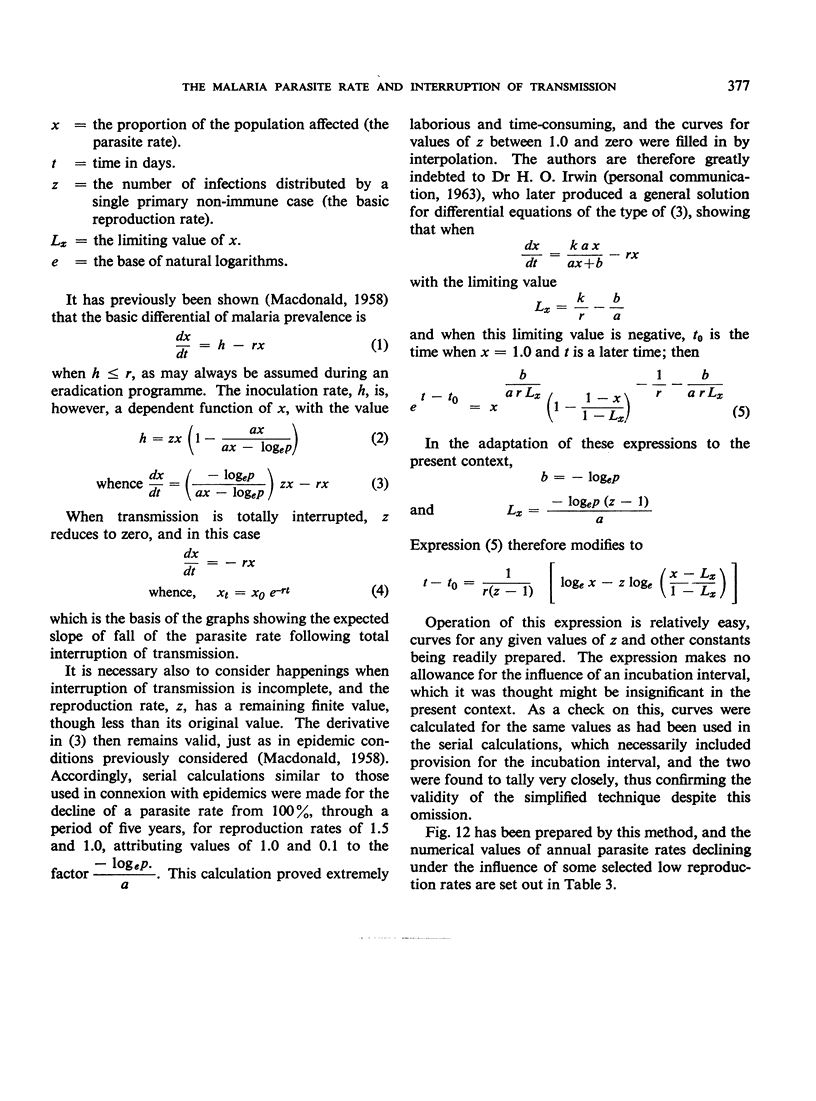
Selected References
These references are in PubMed. This may not be the complete list of references from this article.
- DE ZULUETA J., LACHANCE F. A malaria-control experiment in the interior of Borneo. Bull World Health Organ. 1956;15(3-5):673–693. [PMC free article] [PubMed] [Google Scholar]
- JEFFERY G. M., EYLES D. E. The duration in the human host of infections with a Panama strain of Plasmodium falciparum. Am J Trop Med Hyg. 1954 Mar;3(2):219–224. doi: 10.4269/ajtmh.1954.3.219. [DOI] [PubMed] [Google Scholar]
- James S. P., Nicol W. D., Shute P. G. A Study of Induced Malignant Tertian Malaria. Proc R Soc Med. 1932 Jun;25(8):1153–1186. [PMC free article] [PubMed] [Google Scholar]
- James S. P., Nicol W. D., Shute P. G. Clinical and Parasitological Observations on Induced Malaria: (Section of Tropical Diseases and Parasitology). Proc R Soc Med. 1936 Jun;29(8):879–894. [PMC free article] [PubMed] [Google Scholar]
- MACDONALD G. The analysis of equilibrium in malaria. Trop Dis Bull. 1952 Sep;49(9):813–829. [PubMed] [Google Scholar]
- MACDONALD G. The analysis of malaria epidemics. Trop Dis Bull. 1953 Oct;50(10):871–889. [PubMed] [Google Scholar]
- MACDONALD G. The analysis of malaria parasite rates in infants. Trop Dis Bull. 1950 Oct;47(10):915–938. [PubMed] [Google Scholar]
- METSELAAR D. Seven years' malaria research and residual house spraying in Netherlands New Guinea. Am J Trop Med Hyg. 1961 May;10:327–334. doi: 10.4269/ajtmh.1961.10.327. [DOI] [PubMed] [Google Scholar]


